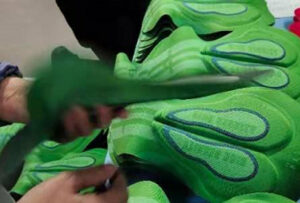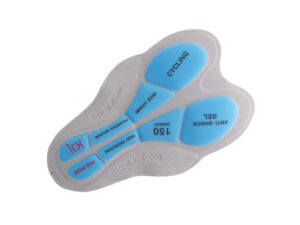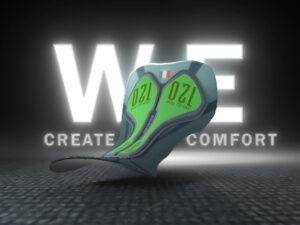Introduction to Cycling Pad Evolution
Cycling, a sport synonymous with endurance and precision, necessitates equipment that provides unparalleled comfort and efficiency. Paramount among such gear is the cycling pad, a component that has undergone a remarkable evolution, shaping the experience of cyclists worldwide.
The Emergence of Cycling Pads
The genesis of cycling pads is rooted in the need for comfort during long rides. Initially overlooked, their significance burgeoned as cycling transformed from a leisurely pastime to a competitive sport. Early iterations were rudimentary, providing minimal comfort but highlighting the necessity for more advanced solutions. This recognition began an evolutionary journey for cycling pads, driven by a quest for improved rider comfort and performance.
Importance in Modern Cycling
Today, the cycling pad is not merely an accessory but a critical element that enhances rider performance and comfort. Its evolution mirrors the advancements in cycling technology and the growing understanding of ergonomics in sport. Modern cycling pads are a complex amalgamation of material science, ergonomic design, and aesthetic appeal, each aspect meticulously engineered to meet the diverse needs of cyclists.
Genesis of Cycling Comfort: Pre-1970s
The history of cycling wear in the early days reveals a stark contrast to today’s high-tech gear. It was an era where comfort often took a backseat, and functionality ruled the design ethos.
The Era of Minimal Comfort
In the nascent stages of cycling, padding was virtually nonexistent. Cyclists relied on basic garments, enduring discomfort for the love of the sport. The ruggedness of early cycling adventures was mirrored in the attire, which was more about durability than comfort. Riders often faced challenges such as chafing and discomfort, underscoring the need for more specialized cycling wear.
Material Choices in Early Cycling Wear
Materials like wool dominated the scene, offering minimal cushioning. These natural fibers, while durable, lacked the sophistication and comfort of modern materials. The choice of wool represented the limited technological options available then, but it also set the stage for the evolution of more advanced materials. This period was pivotal in highlighting the limitations of traditional fabrics and the need for innovation in cycling wear.
Innovations in the 1970s and 1980s
This period marked a pivotal shift in cycling pad design, introducing innovations that laid the foundation for modern cycling comfort.
Introduction of Padding
The 1970s saw the advent of the first padded cycling shorts. This groundbreaking development utilized materials like leather and foam, offering riders a previously unknown level of comfort. These early pads were a significant departure from the non-padded shorts of the past, initiating a new era in cycling apparel. They represented the industry’s first steps towards addressing the comfort needs of cyclists, setting a new benchmark in cycling gear.
Shift from Natural to Synthetic Materials
The 1980s further revolutionized cycling wear with the introduction of synthetic materials. These new types of fabrics supplied improved durability, comfort, and moisture management, significantly enhancing the cycling experience. The shift from natural to synthetic materials was a game-changer, marking a departure from traditional fabrics to more advanced, performance-oriented materials. This period saw the introduction of materials like Lycra and polyester, which provided better stretch, durability, and moisture-wicking properties, crucial for long-distance cycling.
Technological Advancements in the 1990s
The 1990s witnessed a surge in technological innovations, drastically transforming cycling pad design.
Emergence of Gel and Foam Pads
This era saw the introduction of gel and foam pads, offering superior comfort and shock absorption. These materials marked a significant leap in the quest for the perfect cycling pad. Gel pads, in particular, provided a new level of comfort by better distributing pressure and reducing vibration. With their lightweight and moldable properties, foam pads offered customizable support, adapting to the unique contours of each rider.
Improved Design for Ergonomics
Advancements in ergonomics led to designs that perfectly contoured the rider’s body, reducing strain and enhancing performance. This period saw the development of pads with varying densities and shapes, tailored to different types of riding. The focus on ergonomics also led to gender-specific designs, acknowledging the different anatomical needs of male and female cyclists. These ergonomic improvements were pivotal in reducing the risk of injuries and enhancing the overall cycling experience.
The 2000s: A Focus on Material Science
The new millennium ushered in an era where material science became central to cycling pad development.
Breathability and Moisture Management
Fabrics evolved to offer unparalleled breathability and moisture-wicking properties, essential for long-distance cycling. The 2000s saw the rise of high-tech fabrics that could efficiently wick away sweat, keeping riders dry and comfortable. This advancement improved rider endurance and prevented skin irritation and overheating.
Advances in Fabric Technology
The 2000s saw the development of fabrics that combined comfort, durability, and environmental sustainability, setting new standards in cycling apparel. Introducing materials with antibacterial and UV protective properties added another layer of functionality to cycling pads. These advances in fabric technology enhanced the performance and comfort of cycling pads and addressed broader concerns like rider health and environmental impact.
Recent Innovations and Future Trends
Groundbreaking innovations and a glimpse into the future of cycling pads have characterized the last decade.
Cutting-Edge Materials and 3D Printing
Materials like memory foam and the advent of 3D printing have opened new possibilities in custom-fit and comfort. Using memory foam in cycling pads brought a new level of comfort, adapting to the rider’s body shape for personalized support. 3D printing technology has created pads with complex geometries and customized designs, offering unprecedented personalization in cycling gear.
The Move towards Customization
The trend towards personalized gear reflects a deeper understanding of individual rider needs and biomechanics. Customization has become a key aspect of modern cycling pad design, allowing for gear that caters to each cyclist’s unique anatomical and riding style differences. This shift towards personalized cycling gear is not just about comfort but also about optimizing performance and reducing the risk of injury.
Impact on Performance and Comfort
The evolution of cycling pads has profoundly impacted both amateur and professional cyclists.
Enhancing Endurance and Comfort
Modern pads significantly enhance endurance and comfort, allowing riders to perform at their best for longer. Advancements in pad design and materials have made it possible for cyclists to undertake longer, more challenging rides with greater ease. This enhancement in comfort has been a key factor in the growing popularity of cycling as a sport and recreational activity.
Reduction in Injury and Strain
Ergonomically designed pads have played a crucial role in reducing the risk of injury and strain, making cycling more accessible and enjoyable. The focus on ergonomics and material science has led to the development of pads that distribute pressure evenly, reduce vibration, and prevent chafing. This has been instrumental in reducing common cycling ailments like saddle sores and lower back pain, making cycling a more comfortable and safe activity for all levels of riders.
Sustainability in Cycling Pad Design
Sustainability has become a key consideration in designing and manufacturing cycling pads.
Eco-friendly Materials
The industry increasingly embraces eco-friendly materials, reflecting a commitment to environmental stewardship. The move towards sustainable materials like recycled fabrics and biodegradable foams is a response to the growing environmental concerns and the cycling community’s commitment to sustainability. These eco-friendly materials are better for the environment and maintain the high performance and comfort standards expected in modern cycling gear.
Longevity and Lifecycle of Pads
Modern pads are not only more comfortable but also more durable, reducing waste and promoting sustainable practices in cycling. The focus on longevity means that cycling pads now have a longer lifecycle, reducing the need for frequent replacements and minimizing their environmental footprint. This shift towards durability and sustainability reflects the cycling industry’s commitment to environmental responsibility and sustainable practices.
Conclusion: The Ongoing Evolution
The journey of cycling pad design is far from over. It continues evolving, driven by technological advancements and a deep understanding of rider needs.
The Future of Cycling Pads
Emerging technologies and materials promise even greater advancements, potentially revolutionizing cycling comfort and performance. The future of cycling pads lies in the ongoing innovation in material science, design, and customization. With advancements like smart fabrics and biometric integration on the horizon, cycling pads are set to become more sophisticated, offering even greater levels of comfort and performance enhancement.
Embracing Change in Cycling Gear
As the cycling world continues to evolve, the cycling pad remains a testament to the sport’s relentless pursuit of excellence and comfort. The future holds exciting possibilities for this essential cycling gear, with innovations poised to further transform the cycling experience. The ongoing evolution of cycling pads reflects the sport’s dynamic nature and continuous strive towards improvement, making cycling more enjoyable and accessible to a broader range of enthusiasts.




